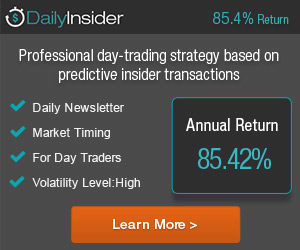The Business Cycle
[ad_1]
Investors who want to beat the market should be followers of the business cycle. The business cycle is a long-term pattern of changes in Gross Domestic Product (GDP) that follows four stages: expansion, prosperity, contraction, and recession. After a recessary phase, the expansionary phase can start again. The phases of the business cycle are characterized by changing employment, industrial productivity, and interest rates. Some economists believe that stock price trends precede business cycle stages. As a result the economic cycle provides the strategic framework for economic activity and investment. The business cycle affects employees, employers and investors. For example:
- The economy is strong, people are employed and making money. Demand for goods – food, consumer appliances, electronics, services – increases to the point where it outstrips supply. This demand fuels a rise in prices, or inflation.
- As prices increase, people ask for higher wages. Higher employment costs translate into higher prices for goods, fueling an upward spiral effect.
- When prices get too high, consumers decide goods are too expensive and demand decreases. When demand decrees, companies lay off workers because they do not need to make as many goods or provide as much service.
- Decreasing demand fuels declining prices, which means the economy is in a recession.
- Lower prices spur demand. As demand picks up, people begin buying again, fueling the need for greater supply. And the cycle goes back to the beginning.
When the business cycle does not run smoothly, it can have consequences as disastrous as the Great Depression. That's why governments intervene to try to manage the economy. For example, if it appears that inflation is rising too quickly, the Federal Reserve (the central bank of the US charged with handling monetary policy) may decide to raise interest rates to curtail spending. On the other hand, if the economy is performing poorly, the government may lower taxes to spur consumption and investment. Interest rates and the yield curve play a very important role in determining economic activity and the performance of the stock market. Higher interest rates increase the costs to businesses and individuals. Companies must pay more to borrow money for capital investments or to fund daily business operations. Individuals pay more for mortgages as well as other loans they may take out to purchase products. Higher interest rates also increase the demand for money to invest in bonds taking money that could or was invested in the stock market. The yield curve is a plot of the yield on bonds with the same credit quality across different maturities (the link above provides an interesting interactive model of the "living" yield curve). The basic assumption is you get more interest on your investment in a bond by holding it longer. The theory states there is more risk for holding a bond for 10 years than for 5 years, or for 5 years than for 90 days. Bloomberg provides a current chart of the yield curve for US Treasuries at Bloomberg . As the economy grows and expands the Federal Reserve usually raises interest rates to try to control inflation. When the economy contracts the Federal Reserve will lower interest rates to try to activate demand by lowering the costs of borrowing. If you hear that the Federal Open Market Committee (FOMC) has raised or lowered rates, they are actually raising or lowering the federal funds rate for banks. The federal funds rate is the interest rate at which depository institutions lend balances at the Federal Reserve to other depository institutions overnight.
The business cycle has implications for markets and investors. Broadly, a recession often corresponds with a sustained period of weak stock prices, or a bear market. And a healthy, expanding economy that keeps inflation from rising too quickly often corresponding with a bull market, or period of sustained market growth.
Fortunately, there are investment strategies for all parts of the cycle, thanks to the divers economy we have. Companies that do well when the economy is experiencing good times are called cyclical stocks. Industries that fall under this group include travel and leisure companies, airlines, consumer electronics firms and jewelry makers. Companies that make goods that are necessities, such as food and health care are called non-cyclical stocks. These stocks tend to provide more stability during an economic downturn. During an economic expansion one should invest in cyclical stocks. On the other hand during an economic contracting one should consider investing in non-cyclical stocks.
Sam Stovall's Sector Investing, 1996 states that different sectors are stronger at different points along the business cycle. Be Forewarned, this is a very expensive book, however it is worthwhile, as it is the best explanation of sector rotation.
The hard part in all this is identifying where the economy is in the business cycle. As you may realize this is no easy matter and many economists get it wrong. There are many indicators that get published on a regular basis that people use to monitor the economy. Unfortunately, there is not a simple way to make this strategic decision. The best policy is to not try to predict the business cycle, but rather to monitor the economy looking for signs that it is changing direction. The change in direction takes many months so you have time to make your observations. Keep in mind that the stock market is considered a leading indicator and will attempt to forecast that the economy is beginning to level off or contract and pull back. Unfortunately, these can be false indications as well.
As an investor I seek to understand where we are in the business cycle to help guide me where to look for opportunities. However, I do not try to forecast the cycle since I realize I am no better than many economists who make it a full time job to make these predictions. In fact, if a good opportunity shows up in my scans and it is from a sector that is out of cycle, I will still consider it in my evaluation. However, sector rotation can produce excellent opportunities and must be carefully examined when evaluating the business cycle. Just keep in mind that many investors and gurus are wrong when they claim that we are entering a new stage in the business cycle. This is an art based on experience much more than it is a science.
While the best money is made by being in the right sector at the right time, the problem is deciding when to move to the right sector. Moving one's capital to a new sector too early will result in weaker performance at best with losses more likely. On the other hand, if one is late getting into the sector you miss much of the uptrend and as a result much of the potential profit.
However, there is a strategy that works if one is careful, their homework and has a little bit of luck. Start by monitoring the performance of the economy carefully, observing overall economic performance and interest rates. Pay particular attention to FOMC announcements and changes in interest rates as well as the overall yield curve. Also, monitor the earnings announcements and conference calls of companies in key sectors, looking for changes in the economy. If companies are reporting growing earnings and forecasting expectations, then that is a sign the economy is likely in an expansion phase. If earnings are declining and less then expectations, it is a sign we are entering a recessionary phase. Be sure to examine all possible indications and not just earnings announcements. Finally, do not listen to the talking heads on any of the business TV stations, as very few of them have any idea of what the economy or the market will do.
Once you have decided where you think the economy is within the overall business cycle, begin to research companies that will benefit most from your overall analysis. For example, if we believe that the economy is at the peak of full recovery and is likely to be entering the early recessionary phase, then we should be looking for the best value companies in the Staples, Services, Utilities and Finance sectors. Notice, I do not suggest focusing on only one sector, but rather that span the current stage of the economic cycle. This gives your portfolio some diversification while still following the sector rotation model.
[ad_2]
Source by Hans Wagner




